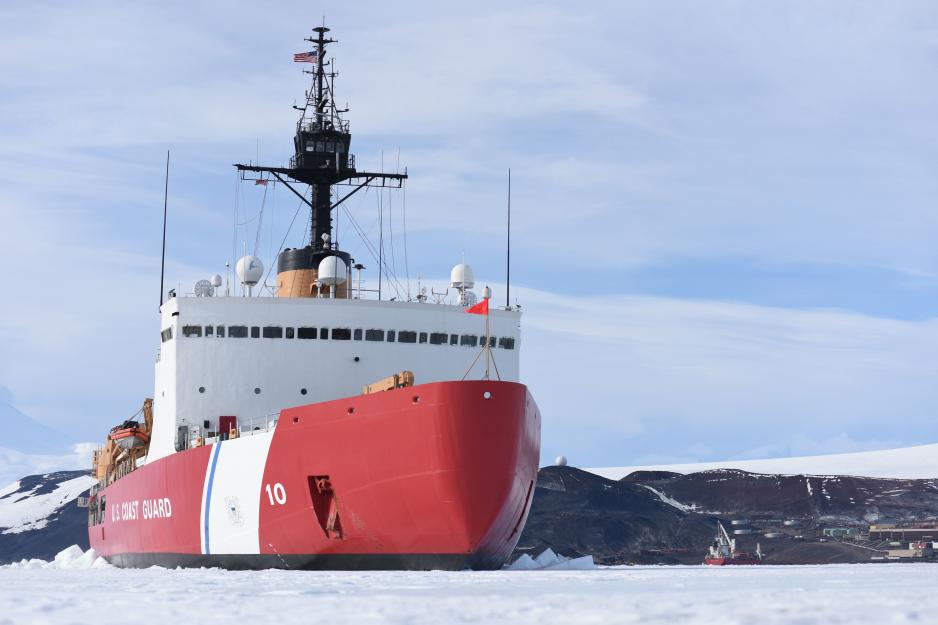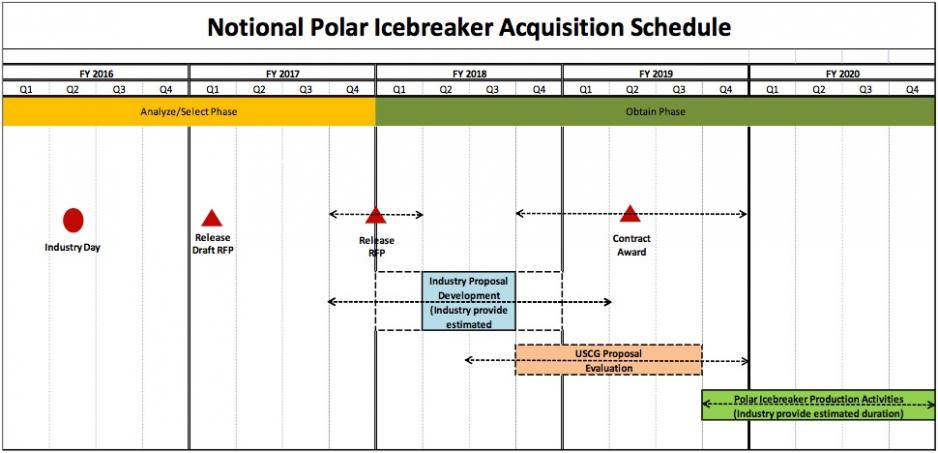US Senate moves towards fully funding a new icebreaker

Subcommittee wants to use Navy dollars to pay for Coast Guard cutter.
The United States’ ambition of building a new $1 billion icebreaker took a big step towards becoming a reality on Tuesday.
The Senate subcommittee tasked with producing the initial 2017 defense spending bill included a $1 billion appropriation to fully-fund a new heavy icebreaker—well beyond the roughly $150 million President Obama requested from Congress in February to spend on designing a new icebreaker in 2017.
"This is a significant victory in my decade-long fight to turn our nation’s focus to the Arctic and embrace our role as an Arctic nation,” said Senator Lisa Murkowski, the Alaska Republican who has largely led to legislative fight to acquire new icebreakers, in a press release.
The Senate Defense Appropriations Subcommittee, of which Murkowski is a member, passed the $574.5 billion spending bill with bipartisan support on Tuesday. Members of the subcommittee are hoping the $1 billion tabbed for the new icebreaker, which the Coast Guard simply dubs "The Polar Icebreaker (PIB)", is enough to cover the full cost of the ship.
Experts and policymakers estimate a new US-built icebreaker will end up costing between $800 million and $1.2 billion.
The Details
The $1 billion earmarked for the icebreaker goes far above and beyond President Obama’s original $147.6 million budget request to design the PIB. The subcommittee also funded nine other Navy ships that were not in the President’s initial request in the latest bill.
In addition to securing funding for the icebreaker, the way in which the Senate subcommittee structured the $1 billion appropriation provides additional security and assurances that the ship will be built. Under the subcommittee’s bill, the $1 billion will come entirely from the US Navy’s shipbuilding account, rather than the US Coast Guard’s significantly smaller shipbuilding budget.
This rather unique funding model has been used to acquire expensive icebreakers for the relatively ‘poor’ Coast Guard before, in particular in 1990 the model was used to fund the medium icebreaker Healy. At that time, both the Coast Guard and Navy were under the auspices of the Department of Defense (DoD). Today, the Coast Guard is a part of the Department of Homeland Security (DHS), a factor that some observers thought might prevent the use of the 1990 Healy funding model.
Robust funding
Not only does the proposal to use the US Navy budget to pay for the PIB make the source of the funding more robust, but it also means that the next US icebreaker can be paid for "up-front" rather than piecemeal over the course of several years. This one-time appropriation schedule would help eliminate annual political battles over whether to fund the construction of the icebreaker. The up-front funding approach will greatly improve the icebreaker’s likelihood of being built on schedule and on budget.
The decision to push the DoD to foot the $1 billion price tag for the icebreaker would also insulate the Coast Guard’s other acquisition projects—some of which have Arctic roles, like the National Security Cutter (NSC) and Offshore Patrol Cutters (OPC)—from potential cuts in order to help fund the icebreaker acquisition year-to-year. In fact, in a separate Senate markup of the 2017 budget for the Department of Homeland Security that was also released on Tuesday, an additional $100 million more than requested was devoted set aside for the OPC program, due in part to the savings from DoD funding the icebreaker. Notably, the Senate’s proposed 2017 DHS budget alsos kicks in $18 million to support the Coast Guard’s icebreaker recapitalization program.
Acquisition Schedule
Prior to the Senate defense appropriation subcommittee earmarking a full $1 billion for a polar icebreaker in the 2017 budget, the Coast Guard had already established its own acquisition timeline for the ship. While the service released preliminary requirements for the ship in January, the full first draft of the Coast Guard’s Request for Proposals (RFP) will be released in early 2017, followed by an official RFP released in late 2017 or early 2018, which will more clearly lay out technical specifications and official requirements for the shipbuilding industry.
The Coast Guard anticipates awarding an actual contract to a shipyard to build the first icebreaker sometime between late 2018 and late 2019. Next, the Coast Guard hopes to begin construction of the first PIB beginning as soon as late 2019. Having $1 billion set aside in 2017 to fund those acquisition activities would help ensure those benchmark and milestone dates are met.

Next Steps
Before any contracts are awarded, the 2017 defense spending bill needs to be authorized, which will likely be drawn out over the course of 2016. For the Senate subcommittee version that tabs $1 billion for an icebreaker, the next step will be a review by the full Senate Appropriations committee beginning as early as Thursday.
If and when the defense spending bill clears that hurdle it will go before the entire Senate for consideration. Of course, the bill could still face challenges on the other side of the Capitol Building from the House, where the House Appropriations Subcommittee on Homeland Security has been hesitant to fully-fund a new icebreaker earlier this year.
If the 2017 defense bill passes with the $1 billion icebreaker appropriation intact, it will all but guarantee that at least one icebreaker will be built, likely beginning in 2019. Despite that, both the Coast Guard and the Obama White House have indicated their plans involve acquiring two icebreakers in the coming years.
But that is another legislative battle for another time.

